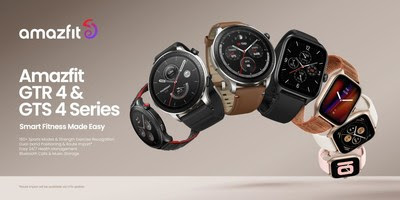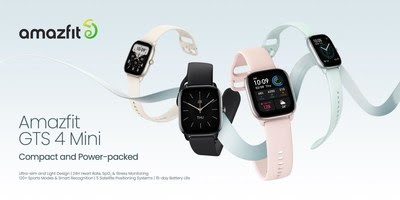The Huthi de facto authorities must end their mahram (male guardian) requirement, which bans women from travelling without a male guardian or evidence of their written approval across governorates under Huthi control or to other areas of Yemen, Amnesty International said today.
Increasingly since April, tightened Huthi restrictions have hindered Yemeni women from carrying out their work, especially those who are required to travel. The restraints imposed by the mahram requirement also apply to Yemeni female humanitarian workers who have struggled to conduct fieldwork, thereby directly impacting access to aid for Yemenis in need and particularly for women and girls.
“The Huthi de facto authorities must immediately lift the mahram requirement. This restrictive rule constitutes a form of gender-based discrimination and entrenches the discrimination faced by women in Yemen on a daily basis. Yemeni women urgently need to be able to move around the country freely in order to work, to seek health care and to give or receive humanitarian aid,” said Diana Semaan, Acting Deputy Director of the Middle East and North Africa.
“The international community should pressure the Huthis to stop imposing mahram restrictions on women. Yemen is already facing a catastrophic humanitarian crisis, and there is now a very real risk that women and girls will stop receiving aid if women humanitarian workers continue to be banned from travelling without a male guardian.”
Under international humanitarian law, all parties to the armed conflict in Yemen, including the Huthis, must facilitate rapid and unimpeded passage of impartial humanitarian assistance to civilians in need and ensure the freedom of movement of humanitarian relief personnel without discrimination. The mahram restriction is contrary to this obligation.
The mahram requirement, which is not part of Yemeni law is being enforced by the Huthis through verbal directives. Since April, the Huthi de facto authorities have increasingly insisted on the mahram requirement to restrict the movement of women across areas they control in northern Yemen, including Saada, Dhamar, Hodeidah and Hajjah governorates, and Sanaa.
Amnesty International interviewed five women activists and members of local organizations, all of whom were subjected to the mahram requirement when attempting to travel for work between April and August, and seven experts with knowledge of how mahram restrictions have impacted the delivery of humanitarian aid.
‘They are suffocating us’
In early August, multiple car rental companies told Afrah*, 36, that she could not rent a car to travel from Sanaa to Aden governorate for work unless she travelled with a male guardian.
“My husband had to take leave from his work, and I had to take my daughter out of her school so that I could meet the mahram requirement and be able to travel to Aden for my work,” she told Amnesty International. “We had to submit to the authorities copies of our IDs, the family record that proves we are married, and a birth certificate for my daughter to be able to rent a car and travel.
“The mahram restriction gives men more control over our lives and allows them to micromanage our movement and activities. They are suffocating us.”
Noura*, 48, was blocked from renting a car to travel across governates in July unless she could provide written approval from her younger brother.
“My brother, who is supposed to be my mahram, is 10 years younger than me,” she told Amnesty International. “When he gave me his written approval note, he apologized that he had to do this for me.”
When Eman*, 35, was travelling in a rental car from Sanaa to Aden governorate in April, she was stopped at a security checkpoint in Sanaa for six hours. Despite presenting written approval from her mahram, the checkpoint officer verbally harassed her and threatened to physically assault her if she got out of the car.
She told Amnesty International: “The man in charge of the checkpoint was yelling at me. He said ‘where is your mahram? Aren’t you ashamed of travelling alone? How did your parents allow you?’ … Then, he took all my documents and my bag, and asked me where I was going and if I worked with an NGO… He said ‘I will not let you go without a problem’.”
Impeding access for humanitarian aid workers
According to seven experts with knowledge of the humanitarian situation and a recent report on humanitarian access in Yemen by the United Nations Office for the Coordination of Humanitarian Affairs, the mahram requirement became prevalent across Huthi controlled areas in the second quarter of 2022, which made the travel of female national staff very challenging for all humanitarian agencies and led to the repeated cancellation of humanitarian aid deliveries.
The experts told Amnesty International that women aid workers who do not have a mahram for travel purposes are increasingly unable to carry out their work. This reality has particularly limited women and girls’ access to desperately needed aid and healthcare services that are only provided by female aid workers. They added that mahram restrictions could lead to women aid workers leaving their positions at humanitarian organizations and consequently struggling to support their families.
One expert told Amnesty International: “The mahram requirement impedes the ability of humanitarian organizations to access all parts of the community and country to deliver aid in a timely manner, and this affects all humanitarian programming, which requires female humanitarian workers to work closely with women and girls. If female staff can’t get access to different parts of the country, it not only stops them from being able to do their lifesaving work, but it negatively impacts the quality of the humanitarian response.”
A second expert added: “The mahram requirement is not only affecting protection programmes but also health care and reproductive programmes and any humanitarian assistance that requires local female staff to be present and deliver aid to women and girls.”
Background
According to local rights organization Mwatana for Human Rights, Huthi restrictions for women have grown increasingly repressive since 2017. Women and girls have been denied access to reproductive health care, banned from working in some governorates, forced into gender segregation in public spaces, and required to follow the mahram restrictions.
Source: Global Polio Eradication Initiative


 développé par la marque fournira des données de performance telles que VO₂ Max après la fin de tout entraînement.
développé par la marque fournira des données de performance telles que VO₂ Max après la fin de tout entraînement.